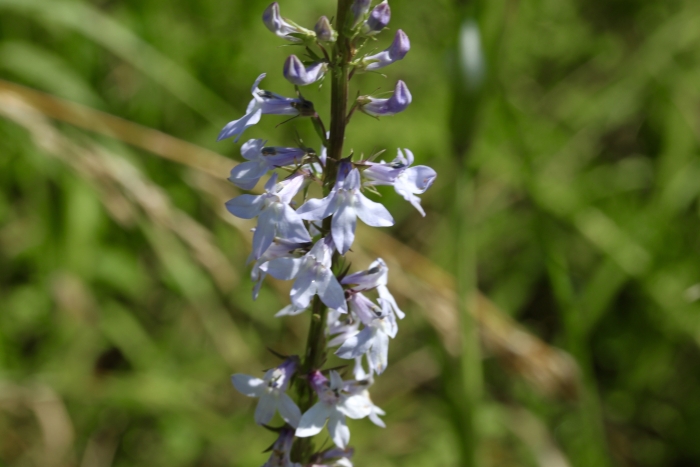Pale Spiked Lobelia
(Lobelia spicata)
Pale Spiked Lobelia (Lobelia spicata)
/
/

Fluff Berger
CC BY-SA 4.0
Image By:
Fluff Berger
Recorded By:
Copyright:
CC BY-SA 4.0
Copyright Notice:
Photo by: Fluff Berger | License Type: CC BY-SA 4.0 | License URL: http://creativecommons.org/licenses/by-sa/4.0/ | Rights Holder: Fluff Berger | Publisher: iNaturalist | Date Created: 2017-06-24T12:19:37-07:00 |




















Estimated Native Range
Summary
Lobelia spicata, commonly known as Pale Spiked Lobelia, is a herbaceous perennial plant native to a variety of habitats including moist meadows, prairies, open woodlands, and savannas in southern Canada and the eastern United States. It typically grows to a height of 1-4 feet (30-120 cm) and spreads 0.5-1.5 feet (15-45 cm) wide. The plant features a rosette of basal leaves and erect, leafy stems topped with dense spikes of small, tubular flowers that are usually white or pale blue, blooming from June to September. The flowers are modestly showy and attract a variety of pollinators, including bees and butterflies.
Pale Spiked Lobelia is valued for its role in supporting native pollinators and for its ability to adapt to a range of soil conditions, though it prefers moist, well-drained soils. It is often used in wildflower gardens, meadow plantings, and restoration projects. In cultivation, it requires minimal maintenance once established, tolerating both full sun and partial shade. While generally disease-free, it can suffer from root rot in overly wet conditions. This species is not known for aggressive roots or significant disease problems, but it can self-seed prolifically under ideal conditions.CC BY-SA 4.0
Pale Spiked Lobelia is valued for its role in supporting native pollinators and for its ability to adapt to a range of soil conditions, though it prefers moist, well-drained soils. It is often used in wildflower gardens, meadow plantings, and restoration projects. In cultivation, it requires minimal maintenance once established, tolerating both full sun and partial shade. While generally disease-free, it can suffer from root rot in overly wet conditions. This species is not known for aggressive roots or significant disease problems, but it can self-seed prolifically under ideal conditions.CC BY-SA 4.0
Plant Description
- Plant Type: Herb
- Height: 1-2 feet
- Width: 1-2 feet
- Growth Rate: Moderate
- Flower Color: Blue, White
- Flowering Season: Summer
- Leaf Retention: Deciduous
Growth Requirements
- Sun: Full Sun, Part Shade
- Water: Medium
- Drainage: Medium, Fast
Common Uses
Bee Garden, Border Plant, Butterfly Garden, Drought Tolerant, Low Maintenance
Natural Habitat
Moist meadows, prairies, open woodlands, and savannas
Other Names
Common Names: Spiked Lobelia, Palespike Lobelia, Highbelia, Pale-Spiked Lobelia
Scientific Names: , Lobelia spicata, Dortmanna leptostachys, Dortmanna spicata, Dortmannia leptostachys, Dortmannia spicata, Lobelia bracteata, Lobelia claytoniana, Lobelia goodenioides, Lobelia hirtella
GBIF Accepted Name: